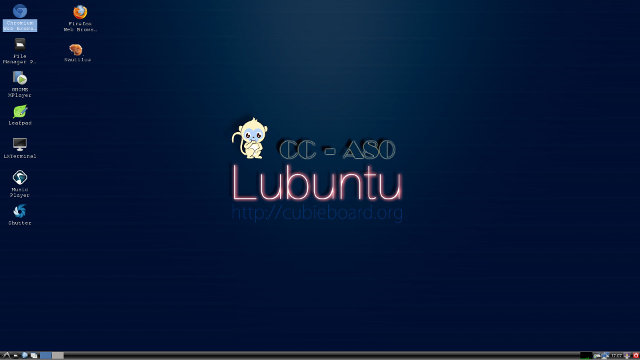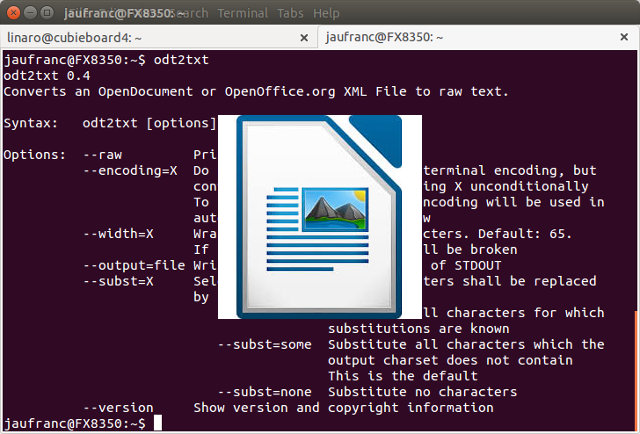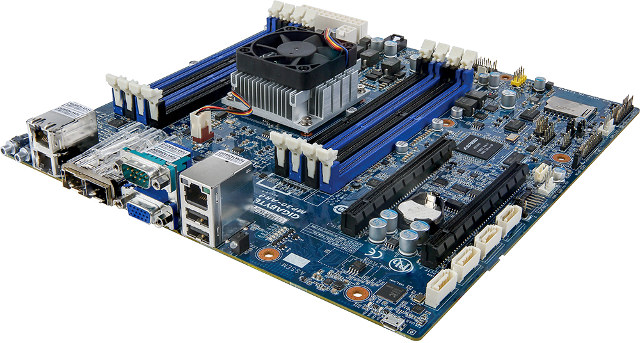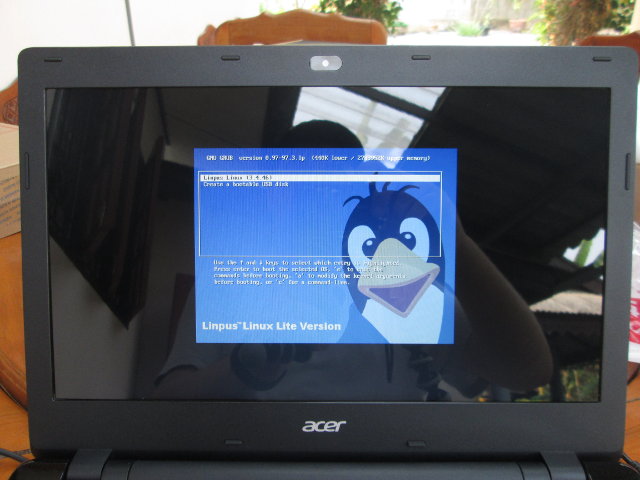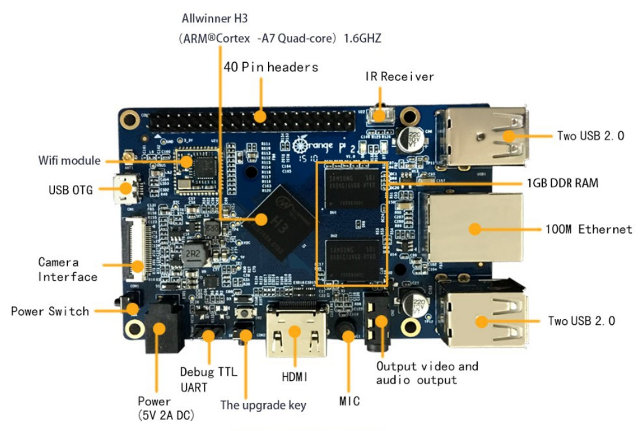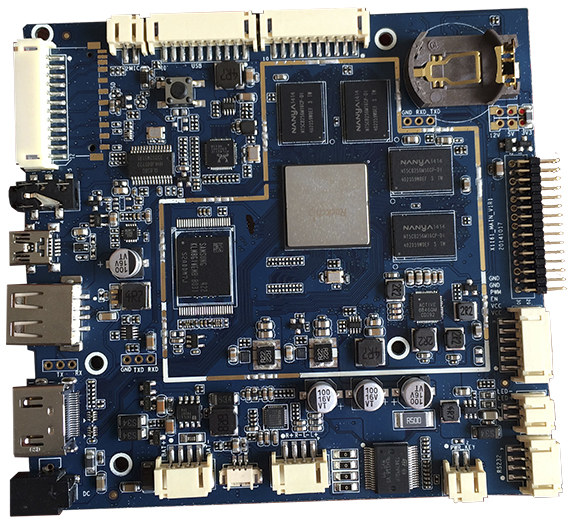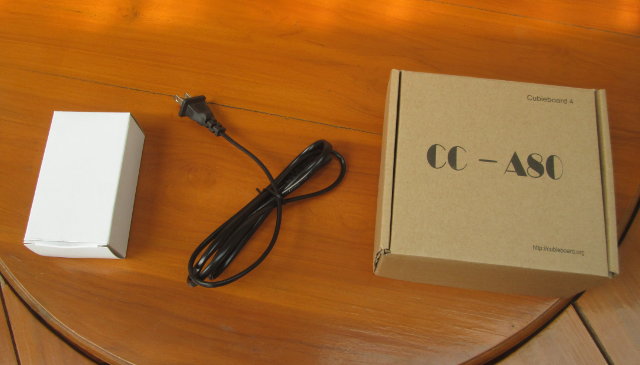Cubieboard4 is a development board powered by Allwinner A80 octa-core processor with 2GB RAM and 16GB eMMC. I’ve already shown how to get started with the board using the pre-installed Android 4.4 image, and run some benchmarks in Android, so now it’s time to check out the Ubuntu Linaro 14.04 image provided by CubieTech. I’ll show how to install and setup Ubuntu 14.04 on the board using a micro SD card, run desktop applications like Chromium, Libre Office, and son on on the board, and complete the review with some Linux benchmarks. Setting up Ubuntu on Cubieboard4 Firmware images for Cubiebord4 can be downloaded @ http://dl.cubieboard.org/model/cc-a80/Image/. Currently Android 4.4, Debian server, Ubuntu Linaro server, and Ubuntu Linaro desktop with LXDE desktop environment. That’s the latter I’ll use for the experiment, and two images are available: linaro-desktop-cb4-card-hdmi-v0.4.img.7z – Bootable image from micro SD card linaro-desktop-cb4-emmc-hdmi-v0.4.img.7z – Installation image to eMMC to […]
How to Read OpenOffice / LibreOffice Files from the Command Line
Let’s say you have edited a file in LibreOffice Writer, but later you access your computer remotely via SSH for example. You don’t really want to bother copying the file to your current machine, and rather just quickly check its content in the terminal. Is there a way? Since odt files are just some zip files containing XML files, you could manually decompress the file, and open XML files, but there is a more convenient the program is called odt2txt. On an Ubuntu / Debian machine it can be installed with:
|
1 |
sudo apt-get install odt2txt |
For basic usage, you just need to pass the filename as parameter:
|
1 2 3 |
odt2txt test.odt This is a test |
But there are also a few more options:
|
1 2 3 4 5 6 7 8 9 10 11 12 13 14 15 16 17 18 19 20 21 22 23 |
odt2txt odt2txt 0.4 Converts an OpenDocument or OpenOffice.org XML File to raw text. Syntax: odt2txt [options] filename Options: --raw Print raw XML --encoding=X Do not try to autodetect the terminal encoding, but convert the document to encoding X unconditionally To find out, which terminal encoding will be used in auto mode, use --encoding=show --width=X Wrap text lines after X characters. Default: 65. If set to -1 then no lines will be broken --output=file Write output to file, instead of STDOUT --subst=X Select which non-ascii characters shall be replaced by ascii look-a-likes: --subst=all Substitute all characters for which substitutions are known --subst=some Substitute all characters which the output charset does not contain This is the default --subst=none Substitute no characters --version Show version and copyright information |
This also wrote with ods (spreadsheets) and odp (presentations) files with ods2txt and odp2txt which are just symlinks pointing to the same program as odt2txt, namely odt2txt.odt2txt. Jean-Luc Aufranc (CNXSoft)Jean-Luc started CNX Software in 2010 as […]
Gigabyte MP30-AR0 is an ARM Server Motherboard Powered by Applied Micro X-Gene 1 SoC
So far, it’s been pretty hard to buy ARM server motherboards for individuals, as most, if not all, products were reserved to corporate entities, but with Gigabyte MP30-AR0 server motherboard featuring the first generation Applied Micro X-Gene 64-bit ARM processor this might be about to change. [Update: As mentioned in comments I was probably wrong here, since the motherboard is listed on the Gigabyte’s B2B website, and not its B2C website]. MP30-AR0 specifications: Processor – AppliedMicro X-Gene 1 processor with 8 ARMv8 cores up to 2.4GHz (TDP 45W) System Memory – 8 x DIMM slots, Single, dual rank UDIMM modules @ 1333/1600 NHz supported (up to 16GB) Storage – 4x SATA III 6Gb/s ports + 1x SD card slot Connectivity – 2x 10GbE SFP+ LAN ports (integrated), 2x GbE LAN ports (Marvell 88E1512), 1x 10/100/1000 management LAN Graphics – Video Integrated in Aspeed AST2400. 2D Video Graphic Adapter with PCIe […]
Linaro 15.03 Release with Linux 4.0 and Android 5.1
Linaro has just announced their 15.03 release with Linux 4.0-rc4 (baseline), Linux 3.10.72 and 3.14.36 (LSK), and Android 5.1. The organization has worked on hardware platforms from members namely Qualcomm, ARM, HiSilicon, Samsung, and STMicro, including the recently announced 96Boards boards, and other ARMv8 platforms. Highlights of the release: Linux Linaro 4.0-rc4-2015.03 updated linaro-android topic added a few build/boot fixes for Arndale (llct-misc-fixes topic) GATOR topic: version 5.20.1 updated integration-linaro-vexpress64 topic by ARM LT (FVP Base and Foundation models, and Juno support) updated topic from Qualcomm LT (ifc6410 board support) simple EEPROM framework (via Qualcomm LT’s topic) updated topic from HiSilicon LT (Hi36xx, HiP04, and X5HD2 families support) rebased “ILP32 patch set v3” onto 4.0-rc2 Linaro builds of AOSP 15.03 updated all the baselines to AOSP 5.1 added commit based trigger feature to CI builds Linaro OpenEmbedded 2015.03 integrated Linaro GCC 4.9-2015.03 dismantled meta-aarch64 layer created meta-ilp32 layer cleaned out […]
How to Install Ubuntu 14.04 on Acer Aspire E5 Laptop
I’ve been owning an Acer Aspire One D255E netbook with a 10″ display, an Intel Atom N455 processor and 1GB RAM that served me well during my travels, but as I’ve become older and less patient, I felt I needed to upgrade it. I planned to spend around 10,000 Baht (~$300), wanted a 14″ display, one of the low power CPU such as Intel Bay Trail-M or AMD Mullins / Beema processors, at least 500GB storage, 4GB RAM, and the ability to install Ubuntu. Finally, after going through several products at my local shop, I had to chose between Acer Aspire E5-411-P3CL with a 7.5W TDP Intel Atom N3540 and Acer Aspire E5-421G-45L0 with a 15W TDP AMD A4-6210 processor that both sell for 11,900 Baht ($365). Despite my preference for processor with lower TDP, I still went with the AMD system, since the performance is a little better, the […]
Orange Pi 2 Allwinner H3 Quad Core Development Board Sells for $35
After Orange Pi Plus development board powered by Allwinner H3 quad core cortex A7 processor, the company has decided to launch a lower cost version of their Allwinner H3 board with Orange Pi 2, that has started selling for a compelling $35 + about $4 shipping worldwide, and provides another sub-$50 alternative to Raspberry Pi 2, ODROID-C1, and Radxa Rock Lite boards. Orange Pi 2 board specifications: SoC – Allwinner H3 quad core Cortex A7 @ 1.6 GHz with 256KB L1 cache, 1MB L2 cache, and an ARM Mali-400MP2 GPU up to 600 MHz System Memory – 1GB DDR3 Storage – micro SD card slot (up to 64GB) Video Output – HDMI, AV port Audio I/O – HDMI, AV port, on-board microphone Connectivity – 10/100M Ethernet, 802.11 b/g/n Wi-Fi (Realtek module) USB – 4x USB 2.0 host ports, 1x micro USB OTG port Camera – CSI Interface Expansions – 40-pin […]
Cloudsto Embed+ RK3288 is a Rockchip RK3288 Board for Digital Signage and Point-of-Sale Applications
As Rikomagic launched their MK80LE (Linux Edition) mini PCs on Cloudsto a few days ago, I also noticed a new page entitled embed+ RK3288, which described what should be the first board sold by Rikomagic/Cloudsto. The Rockchip RK3288 based board can be used as an Android & Linux development board, but it appears to mainly target OEMs for applications such as digital signage, point-if-sale, and web kiosks. Rikomagic embed+ RK3288 specs: SoC – Rockchip 3288 quad core ARM Cortex A17 up to 1.8 GHz with Mali-T764 GPU supporting OpenGL ES 1.1/2.0 /3.0, and OpenCL 1.1 System Memory – 2G DDR3 Storage – 8 to 32 GB eMMC flash. The daughterboard adds an SD card slot. Video / Display interfaces – HDMI 2.0, LCD interfaces (backlit, power, data) Audio Output – HDMI, 3.5mm earphone / audio output jack, and built-in microphone. Connectivity – 802.11 b/g/n Wi-Fi , and Bluetooth 4.0 (external). Gigabit LAN via a daughterboard. USB […]
Cubieboard4 (CC-A80) Unboxing and Getting Started Guide
A few samples of Cubieboard4 board may have been available in China in October 2014, but Cubietech only officially launched their Allwinner A80 development board about ten days ago, and you can buy it for $125 + shipping on sites like R0ck.me, Eleduino, Seeed Studio, and many other distributors. The company decided to send a sample for evaluation, and today I’ll start with a post showing some pictures of the kit, and explaining how to get started with assembly and first boot. Cubieboard 4 Pictures I received the board within two days after the company told me they would send a sample, as they used DHL. I also had to pay a bit of import tax and DHL’s handling fee. There should be CC-A80 box with the board and accessories, a white box for the power supply, and a power cord. There’s quite a few items to play with… The […]


